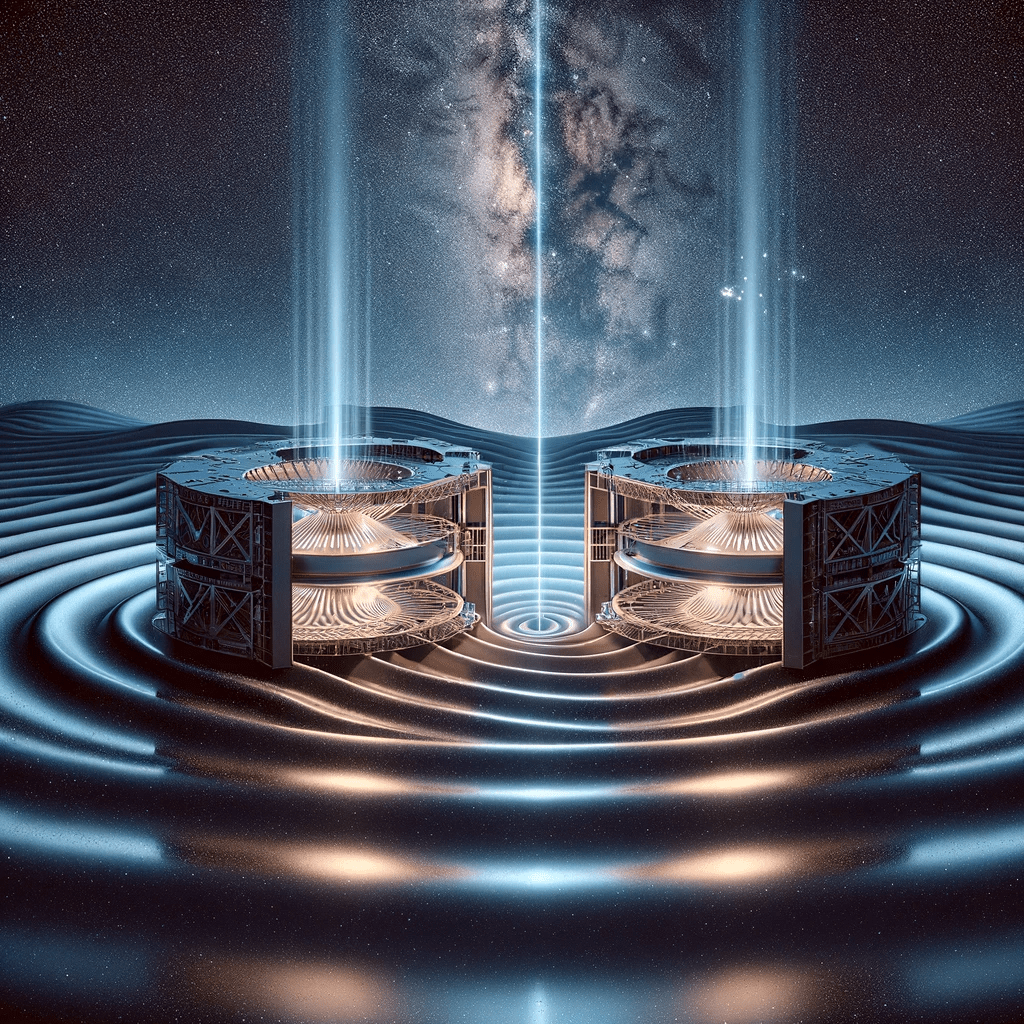LIGO Collaboration

The LIGO (Laser Interferometer Gravitational-Wave Observatory) collaboration is an international effort involving more than 1,200 scientists and engineers from around the world, dedicated to the study and detection of gravitational waves. Gravitational waves are ripples in the fabric of spacetime, predicted by Albert Einstein’s theory of general relativity, which are produced by the acceleration of massive objects, such as merging black holes or neutron stars. LIGO’s mission is to observe these waves directly, providing valuable insights into the behavior of these cosmic events and allowing researchers to probe the fundamental properties of gravity.
Albert Einstein first predicted the existence of gravitational waves in 1916, based on his theory of general relativity. General relativity is a geometric theory of gravitation, where massive objects cause a curvature in spacetime. According to Einstein’s theory, the acceleration of massive objects can generate ripples in the fabric of spacetime, which propagate outward at the speed of light. These ripples are called gravitational waves.
Einstein’s equations of general relativity describe how the curvature of spacetime is related to the distribution of mass and energy in the universe. When massive objects, such as black holes or neutron stars, accelerate or collide, they can cause disturbances in the curvature of spacetime, which travel outward as gravitational waves. These waves carry energy away from the accelerating or colliding objects, and their detection can provide valuable information about the dynamics of the events that produced them.
The LIGO collaboration began in the 1980s, with the construction of the first observatories in the United States in the late 1990s. The LIGO Scientific Collaboration (LSC) was formed in 1997 to bring together the various research groups involved in the project. The LIGO detectors consist of two L-shaped interferometers located in Hanford, Washington, and Livingston, Louisiana. These observatories use highly sensitive laser systems to detect the minute changes in distance caused by passing gravitational waves.
In 2016, LIGO made history by announcing the first-ever direct detection of gravitational waves, confirming Einstein’s century-old prediction and ushering in a new era of gravitational wave astronomy. Since then, numerous detections have been made, providing a wealth of information on the properties and dynamics of massive astronomical events.
The science behind LIGO involves highly sensitive laser interferometry, which measures the minute changes in the relative lengths of the interferometer’s arms due to a passing gravitational wave. When a gravitational wave passes through the interferometer, it causes the lengths of the arms to change by a tiny amount – on the order of one-thousandth the diameter of a proton. By comparing the relative lengths of the arms, LIGO’s detectors can precisely measure these changes and extract valuable information about the properties of the gravitational wave and its source.
Fact 1: LIGO’s first detection of gravitational waves in 2016 was caused by the merger of two black holes, one 36 times the mass of the Sun and the other 29 times the mass of the Sun, located about 1.3 billion light-years away (Source: LIGO Scientific Collaboration).
Fact 2: In 2017, LIGO and the Virgo collaboration jointly detected the first gravitational waves from a binary neutron star merger. This event, known as GW170817, was also observed across the electromagnetic spectrum, from gamma-rays to radio waves, marking the first time a cosmic event had been observed with both gravitational waves and electromagnetic radiation (Source: LIGO Scientific Collaboration).
Fact 3: LIGO has played a crucial role in confirming the existence of a new class of black holes known as intermediate-mass black holes (IMBHs). In 2020, LIGO and Virgo detected a merger of two black holes, one weighing 85 solar masses and the other 66 solar masses, which resulted in a black hole with 142 solar masses, providing strong evidence for the existence of IMBHs (Source: LIGO Scientific Collaboration).
Experts in the field, such as Kip Thorne, Rainer Weiss, and Barry Barish, have been awarded the 2017 Nobel Prize in Physics for their decisive contributions to the LIGO detector and the observation of gravitational waves. These experts have noted that LIGO’s detections have provided a novel way to explore the universe and could lead to a greater understanding of the nature of gravity, the behavior of black holes, and the origins of the universe itself.
One example book that discusses the LIGO collaboration and its discoveries is “Black Hole Blues and Other Songs from Outer Space” by Janna Levin. The book looks into the history of LIGO, the challenges faced by the scientists involved, and the impact of the groundbreaking detection of gravitational waves on our understanding of the universe.
LIGO collaboration has made groundbreaking discoveries in the realm of gravitational wave astronomy, opening up a new way of observing and understanding the universe. The direct detection of gravitational waves has confirmed Einstein’s predictions, provided insights into the behavior of massive cosmic events, and has the potential to deepen our understanding of the fundamental properties of gravity. With continued research and improvements to the sensitivity of the detectors, the LIGO collaboration and the global scientific community are poised to make even more significant discoveries in the years to come.

